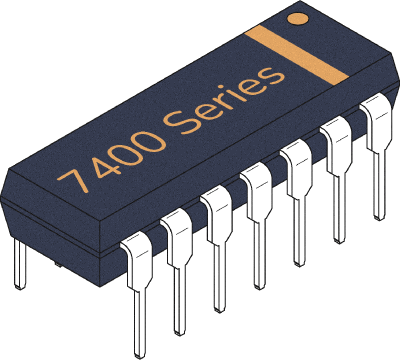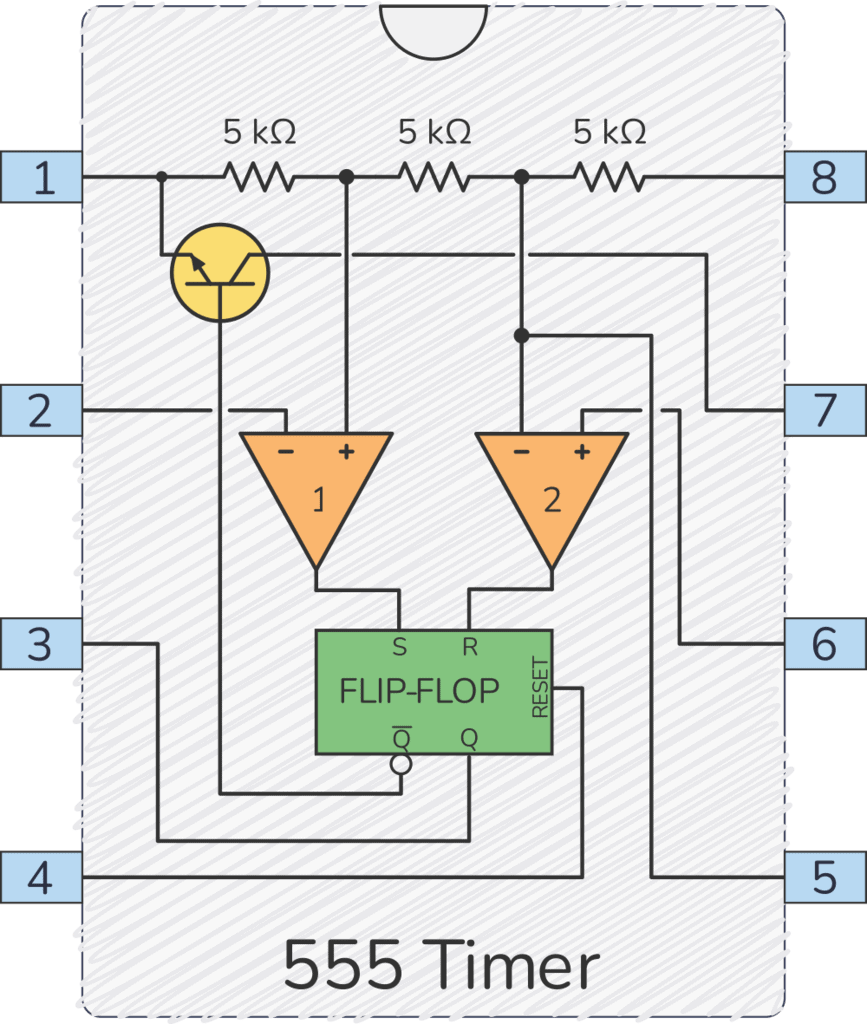The 74×92 (ex 74LS92) is a chip containing a divide-by-twelve counter. This is useful for digital clocks.
In this guide, you’ll learn the things you need to know about this chip in order to use the divide-by-12 counter in your own projects.
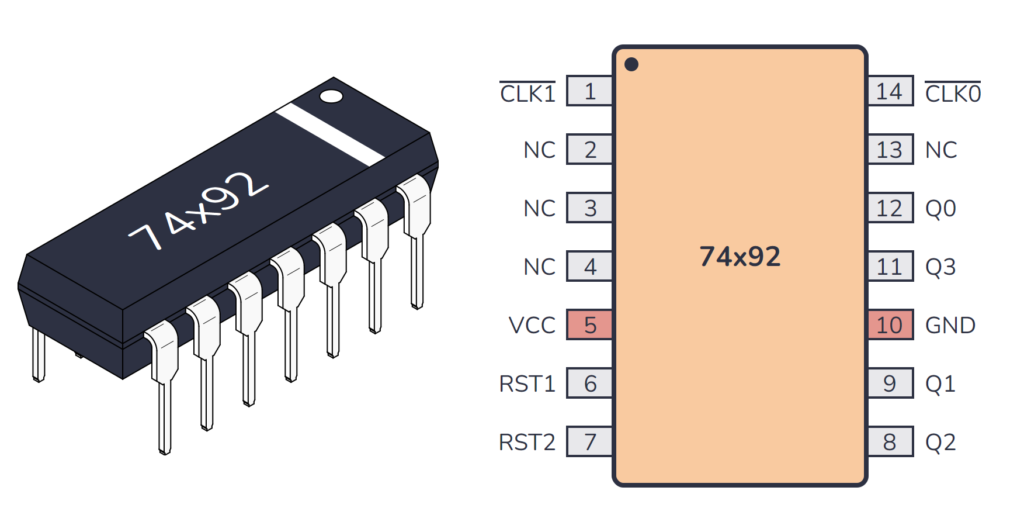
What does the 74HC92 / 74LS92 do?
The 74×92 gives you divide-by-twelve counter that counts from 0 to 11 and gives you the result in a 4-bit binary format. Then it resets to back to 0. It is specifically designed to count 12 occurrences of an event.
How To Use This Chip
The 74HC92 comes in a 14-pin package, and you need to connect it to power before you can use it. Most 7400 ICs support a VCC voltage of 5V. One difference between the HC and LS version of the chip is that the 74HC92 supports 2V to 6V, while the 74LS92 only supports 5V.
The maximum current you can pull out of one output pin of the 74LS92 is 0.8 mA when the pin is high (sourcing) or 16 mA when the pin is low (sinking). For 74HC chips, it’s usually 4 mA both sourcing and sinking.
This can differ between models, so check the datasheet of your model to verify.
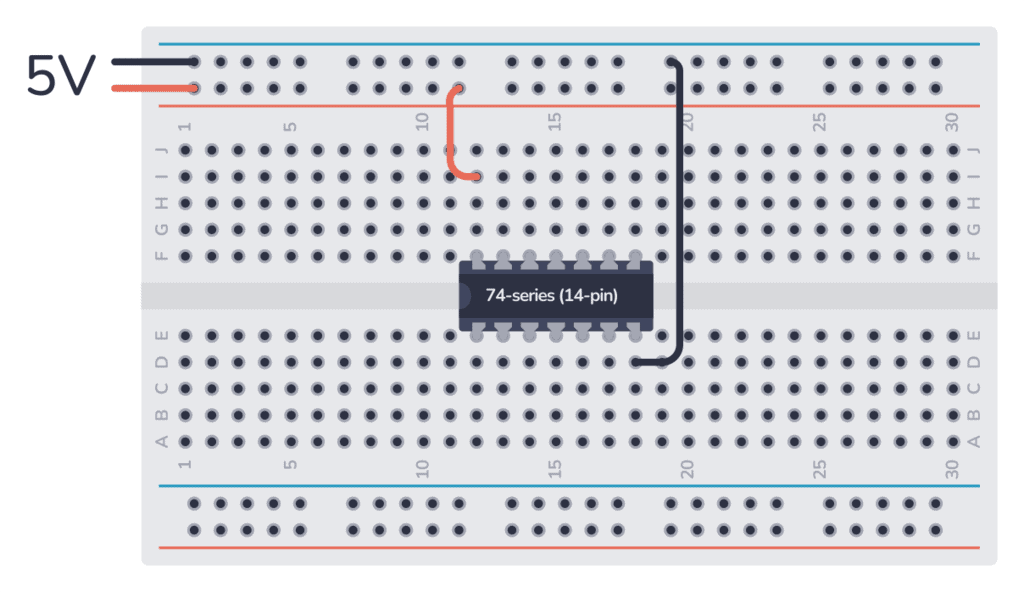
The chip actually contains two counters, so to count up to 12, you need to connect the CLK1 input to the Q0 output. Then use CLK0 as the input for your counting pulses.
The chip is organized internally to first divide by 2 and then further divide that result by 6 using the two clock inputs. By combining these operations, you achieve an overall division by 12.

10 Simple Steps to Learn Electronics
Electronics is easy when you know what to focus on and what to ignore. Learn what "the basics" really is and how to learn it fast.
74×92 Pinout
The 74×92 has 14 pins and contains a 4-bit asynchronous divide-by-twelve counter with pins laid out as shown in the pinout diagram below:
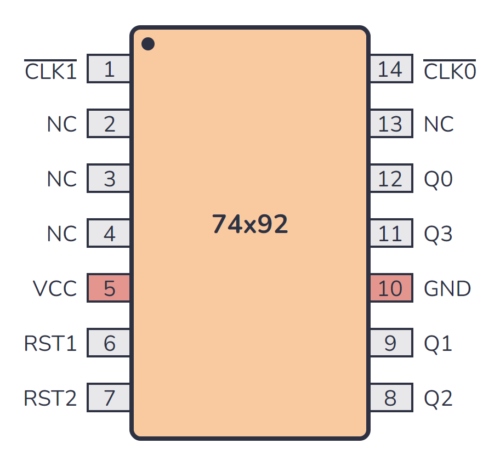
| Pin Name | Pin # | Type | Description |
|---|---|---|---|
| CLK1 | 1 | Input | Clock input for divide-by-6 section (active low). |
| – | 2 | NC | Not connected. |
| – | 3 | NC | Not connected. |
| – | 4 | NC | Not connected. |
| VCC | 5 | Power | Positive power supply. Connect to +5V power. |
| RST1 | 6 | Input | Reset input for counter 1 (resets when high). |
| RST2 | 7 | Input | Reset input for counter 2 (resets when high). |
| Q2 | 8 | Output | 2nd bit output in the counter sequence. |
| Q1 | 9 | Output | 1st bit output in the counter sequence. |
| GND | 10 | Power | Connect to ground (GND). |
| Q3 | 11 | Output | 3rd bit output in the counter sequence. |
| Q0 | 12 | Output | 0th bit output in the counter sequence, least significant bit. |
| – | 13 | NC | Not connected. |
| CLK0 | 14 | Input | Clock input for divide-by-2 section (active low). |
Alternatives and Equivalents for 74HC92 / 74LS92
There are many versions of the 74×92 chip. They all have the same functionality, but with different specifications such as supported voltages and maximum current output.
Here’s a list of a few equivalents of this chip:
- 74HC92 (High-speed CMOS)
- 74HCT92 (High-speed CMOS, TTL compatible)
- 74LS92 (High-speed TTL)
- 74LVC92 (Low Voltage TTL)
- 74AC92 (Advanced CMOS)
- 74ALS92 (Advanced Low-Power Schottky TTL)
- 74F92 (Very High Speed)
- 74C92 (CMOS, similar to the 4000-series)
Some manufacturers also add a prefix, such as the SN74HC92 and SN74LS92 by Texas Instruments.
Can’t find the 74×92 anywhere? Then try one of the following IC alternatives:
- CD4018 – Presettable divide-by-N counter
- CD4059 – Programmable divide-by-N counter
- CD4522 – Programmable BCD divide-by-N counter
If you can’t find the 74×92 IC in your local electronics store, don’t worry, you’ll most likely find it in one of the stores listed on this page of online stores where you’ll find components and tools for all your electronics projects.
Datasheet for the 74LS92 and 74HC92 chips
Download the PDF datasheet for your version of the 74×92 here:
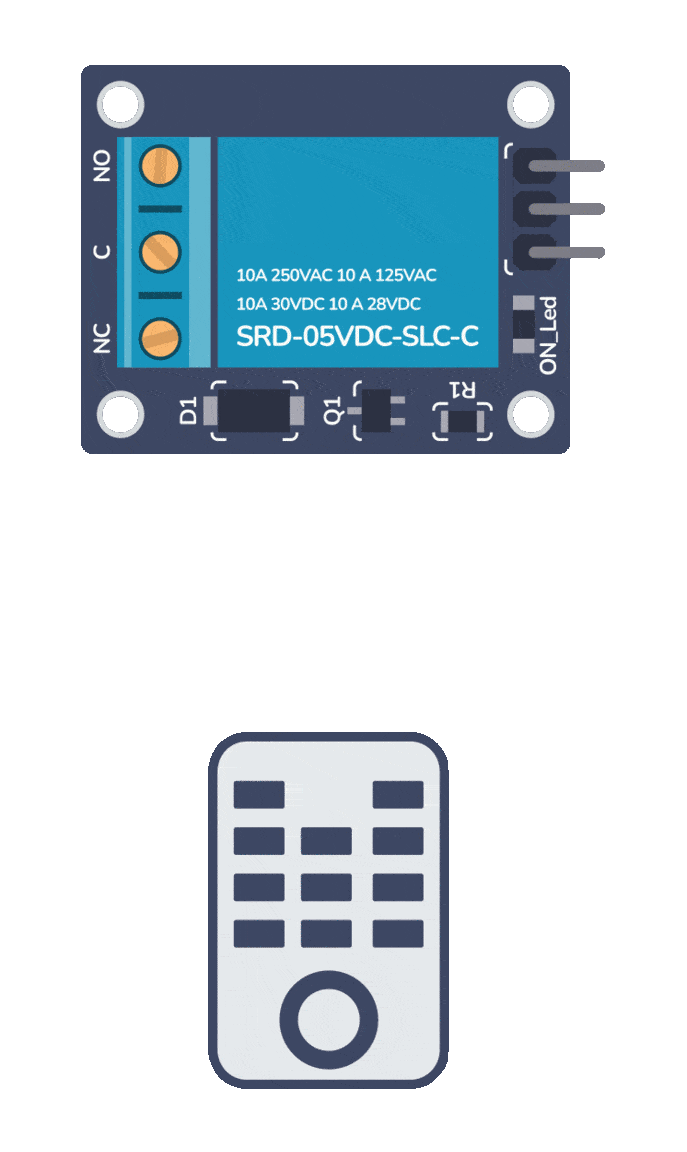
Build Something Useful This Evening
This gadget lets you use any IR remote-control to control your lamp, garden lights, heater oven, garage door, or anything else.

